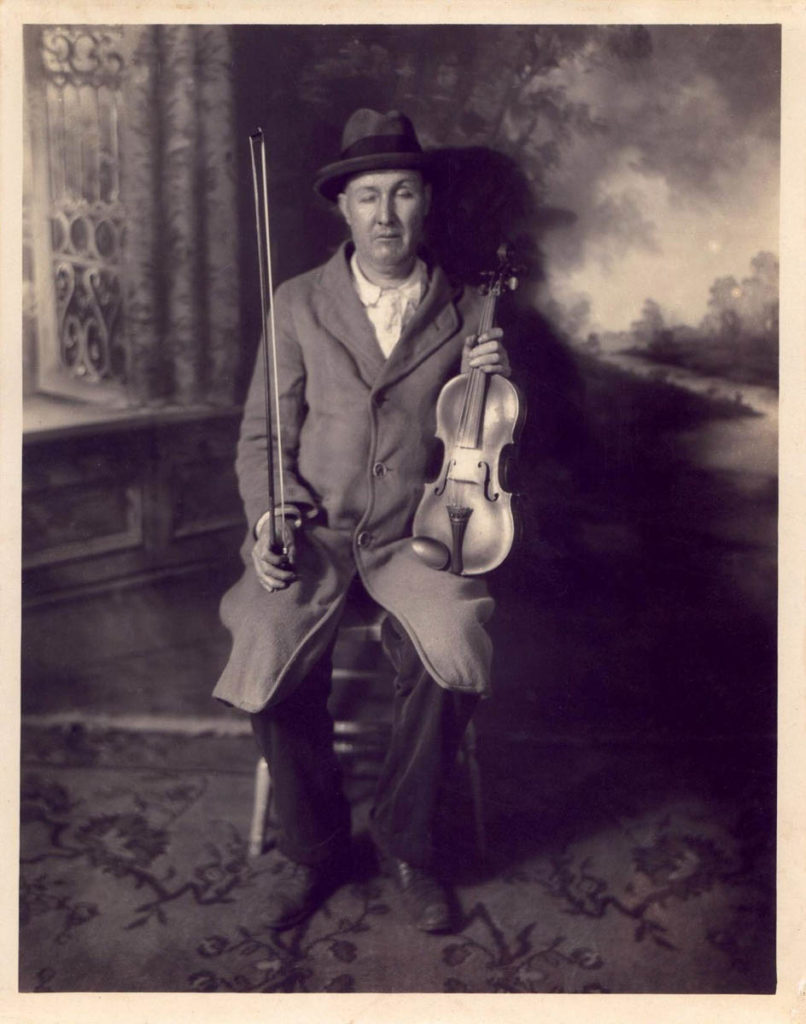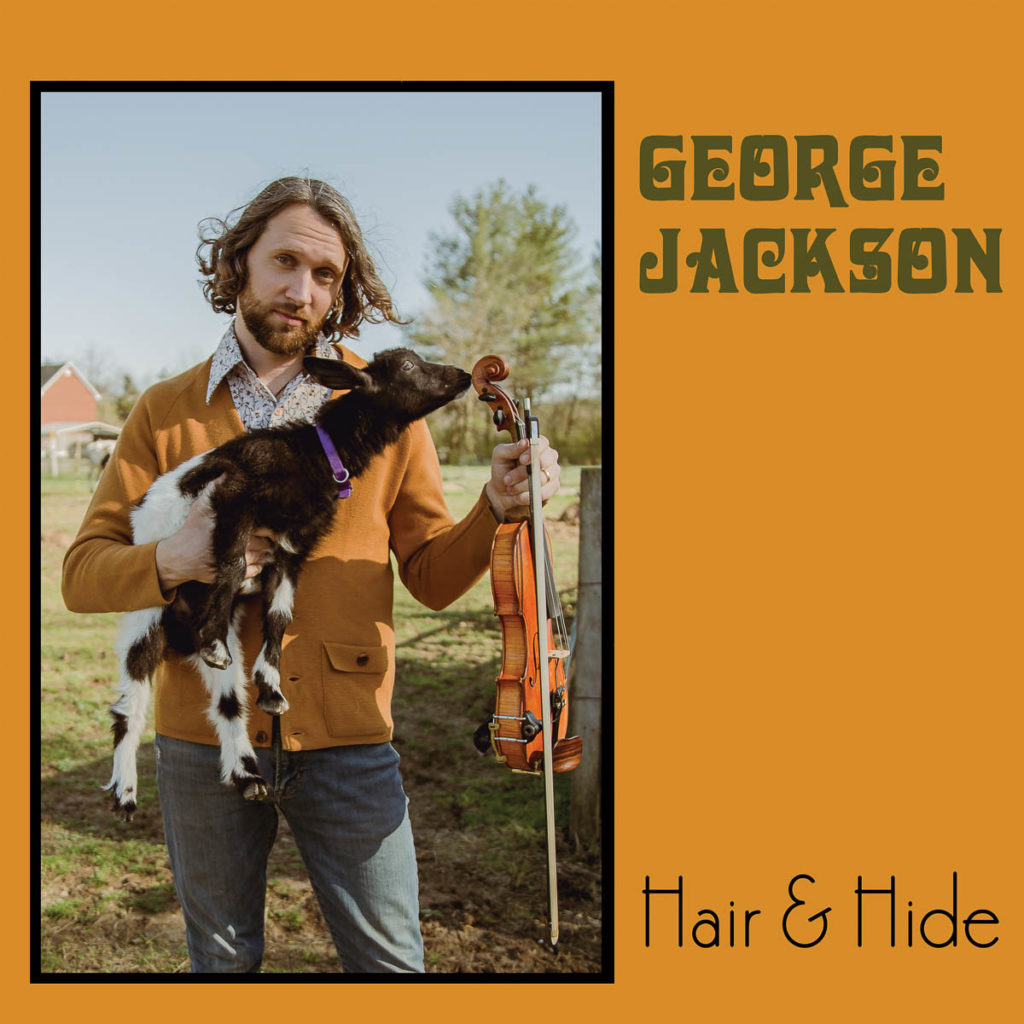Radio Bristol is excited to share “The Root of It,” a series connecting today’s influential musicians to often lesser known and sometimes obscure musicians of the early commercial recording era. The sounds and musicians we hear today on platforms like Radio Bristol can often be traced back to the sounds of earlier generations. What better way to discover these connections than to talk to the musicians themselves about some of the artists that have been integral in shaping their music? These influences, though generally not household names, continue to inspire those who dig deep to listen through the scratches and noise of old 78s, field recordings, and more, finding nuances and surprises that inevitably lead them on their own unique musical journeys.
For this installment of “The Root of It,” we spoke with Nashville-based fiddler George Jackson. Born in New Zealand, George discovered bluegrass music at 14 years old and began learning mostly from recordings. He took to string band music quickly and soon after won the Australian National Bluegrass Championship on fiddle three times; he now pursues a professional career here in Tennessee. With two award-winning albums under his belt – 2019’s Time and Place and the recently released Hair and Hide – Jackson has made quite an impact in the bluegrass, old-time, and folk world as a composer, nuanced musician, and band leader. George spoke to us about celebrated West Virginian fiddler Ed Haley.
George Jackson:
As someone who was born on the other side of the world from where country music comes from – and whose journey through it started as a teen listening only to what I had exposure to around me, mostly just music from Béla Fleck and a few other relatively modern and flash bluegrass pickers – it’s been a continual journey of discovery for me. Throughout, I’ve been diving deeper and further back generation by generation into the history of early American country recording artists, learning where sounds I’m familiar with in modern recordings and players might have originated, or filtered down from, piecing together the lineage though my own experiences playing and learning this music from its practitioners. Ed Haley is a player that brought a lot of threads together for me when I discovered his music and playing, but of course his influence on me had been longer than I knew. Haley is a continual source of inspiration for fiddlers, and though I didn’t know it at the time, his influence on my playing started right back when I started learning American fiddle music, at the age of around 14 in my home land of New Zealand.
I’ve been aware of, and directly impacted by Haley’s music for a good number of years now, but before I knew his playing or even his name, I can trace some early influences that filtered down to me in my teen years. Haley’s virtuosic playing, tune writing, and iconic versions of fiddle tunes are a strong source of influence on subsequent generations of fiddlers in West Virginia and Kentucky where Haley was based, and much further afield spread by the home recordings he made that were later released – these filtered down through the likes of John Hartford into the bluegrass music scene until it reached me in New Zealand many years later. By the time it reached me of course, it had been through many hands and ears, but I can recognize certain Haley-influenced turns of phrase or stylistic details from the way I first learned to play tunes like “Forked Deer.”

By the time I became aware of old-time music specifically, I was closer to my 20s, and as with most people who aren’t brought up in the geographic regions where this music is from or is being played regularly, my first exposure was to modern players and traveling old-time music gateway musicians such as Bruce Molsky. It’s at this point I get that next step closer to Haley’s music, because if his influence is now written into bluegrass fiddling DNA, its inescapable through the playing of almost all modern players of old-time fiddle. There are so many tunes I knew through jam sessions, concerts, and CDs that are Ed Haley specials – I knew this music and its spirit before I knew who to attribute them to specifically.
At a certain point, as happens with most of the music I’m exposed to, I wanted to hear it from the source, so I remember a day when the curiosity got the best of me and I’d heard the name Ed Haley one too many times. And so I finally got around to looking up Haley’s fiddling and listening through the static of some of his home recordings to the wonderfully virtuosic and melodic playing, along with its multiple variations that are his signature. All these threads of my musical journey started to come together, I’d recognize tunes from bluegrass jams amd recordings of modern old-time or bluegrass fiddlers, and I started to hear the root of many influences on my own playing looking back at me. It’s an amazing thing to be able to listen to music made almost a hundred years ago and, in a moment, see how far that sound has traveled, changed, and also stayed the same.
I’ve recorded a few tunes I learned directly from Haley’s playing recently, and when I learn these tunes they feel natural – I recognize the patterns under my fingers. Though playing an Ed Haley tune is never easy, there are always some finger buster moments that make you stop and think, “Boy, this guy was good!” On my new album, there’s a rendition of Haley’s “Ida Red” that’s a total burner of a tune. The first phrase still trips me up if I’m not concentrating, those micro-movements of multiple pinky finger notes on the E string are something else. It doesn’t get much better than Ed Haley, and I’ll be learning things from him for a long time yet, I’m sure.
To learn more about George Jackson or to purchase his new album Hair and Hide, visit georgejacksonmusic.com. Released in November 2021, Hair and Hide is an exploration of fiddle and banjo through 14 songs featuring some of the finest players of their generation, including appearances from Jake Blount, Frank Evans, BB Bowness, and more.

Kris Truelsen is the Radio Bristol Program Director. He also performs in the band Bill and the Belles.


